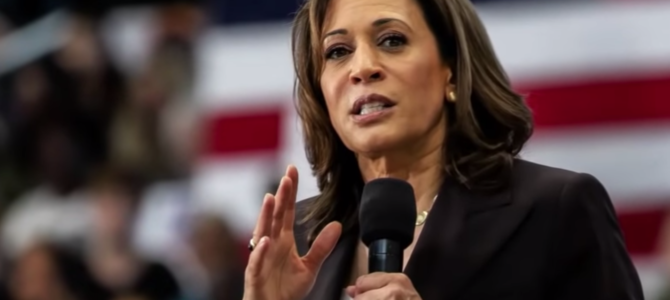
Even if it sounds confusing, tort law is probably the most familiar area of law to the average American. Our incredibly litigious society lionizes tort law in newspaper headlines and Hollywood productions by sensationalizing lawsuits and the resulting jury awards.
Tort law seeks to right wrongs by restoring victims or by punishing wrongdoers. What better legal doctrine could there be to address reparations?
Tort law is used when someone sues someone else. The most common result is payment for damages. “You broke my leg. You owe me $5,000 for medical bills, plus pain and suffering!” This sounds like reparations for the victim, so let’s explore slavery reparations in the same way.
Selecting a Tort Theory
The three areas of tort law are intentional torts, negligence, and strict liability. Think of this as an attack, a slip and fall, and a dangerous consumer product, respectively. Someone can be liable for harming another person under one of these three theories, because they either intentionally, recklessly, or negligently acted badly toward the victim.
The obvious problem already is discerning which theory we could even use for reparations, with no living person intentionally, recklessly, or negligently causing harm. We usually do not hold other people liable for harm someone else has done. It wouldn’t be fair to punish your next-door neighbor on the right because your neighbor on the left egged your front door.
But vicarious liability does offer a chance to hold someone else responsible. Maybe an employer fails to control his employee, or a parent fails to control her child, resulting in some type of harm. Importantly, our legal system recognizes this vicarious liability because the third party also did some type of wrong, even if it was just carelessness. No true justice, however, could involve a truly innocent party being punished for something he had no part in.
When it comes to reparations, even vicarious liability is too strained a theory for recovery. That’s not only because it would hold someone else responsible, but because it would hold an innocent someone else responsible. Not to mention it would flip vicarious liability on its head. Instead of holding a parent responsible for her child’s damage, it would hold a child (or a great-great-great-grandchild) responsible for the sins of his ancestors.
Even if one overlooks that problem, we face another: Tort law does not reward unharmed parties. If your next-door neighbor on the left egged your house, the jury award for the harm wouldn’t go to the neighbor on your right; it would go to you.
Tort law seeks to make a harmed party whole and make the wrongdoing party pay. Slavery reparations, it seems, seeks to make an unharmed party “whole” and extract the payment from an innocent party. This is backward on both counts. It doesn’t matter if we apply the theory of intentionality, negligence, or strict liability; this is not how the system works. It can’t be.
Causation and Damages
Now, the slaveholders, auctioneers, and transporters were the worst of the worst tortfeasors. They acted with malicious intent, and if they were here now, would be liable for every type of damage under the sun — including punitive damages, which are levied after the calculated damage to the victim, purely as punishment for the wrongdoer. These are the bad guys actually responsible for the harm. By enslaving people, they caused real damage at the time.
With inheritable damages, the problem gets more complicated. While some studies have indicated the damage from slavery has been passed down, tort law still requires more. The legitimacy of these theories notwithstanding, tort law does not only require damage. It requires causation. That means the harm has to be pinned to a bad guy. It is already clear that the actual bad guys responsible for slavery are long gone, so even if the damages element were legitimized, meaning people today had provable harm, there is simply no one to collect from.
This is usually where unjust enrichment enters the picture. Some will claim that the current lot of (typically white) Americans should pay because they benefited from slavery. So even if we can’t prove they caused the harm or acted intentionally, recklessly, or negligently, we could still take some of their unearned surplus and redistribute it to repair some damage. This raises about a million questions, but the simplest roadblock is that the causation question applies here as well.
What was the actual and proximate cause of the enrichment? Are particular pots of wealth today directly attributable to slavery such that a reasonable legal theory could be constructed to differentiate dollars earned from businesses, trusts, rents, and assets across hundreds of years and millions of people? Unjust enrichment will fail until we can identify such direct causation, even if there remain true and valid claims of damage persisting throughout generations.
Simply stated, tort law is the only meaningful system of law we have for resolving the type of issue reparations seeks to resolve, and it is categorically, legally, logically, and morally improper for addressing reparations.
Tort Law as Harm Prevention Rather Than Recovery
That does not mean tort law cannot still serve a purpose. The reason it cannot function in a traditional sense is that there can be no duty for a person to repair what he did not cause, contract for, or have anything to do with. Tort law looks backward to repair harm. But it also establishes standards going forward to prevent harm.
This is where negligence law comes in, the area of tort law that holds people responsible for not doing enough to prevent harm to others. Negligence law operates in terms of duty that people have to one another to act with a particular standard of care — for instance, putting railings near high ledges or warning signs about a wet aisle at the grocery.
The tort law of negligence generally holds all people in all places to the standard of reasonable care toward all other people. This means no matter who you are, you have a duty to act reasonably and not carelessly. If you are driving, that means using your turn signal.
This forward-looking aspect of tort law is what prevents the need for going to court, and only by violating it do you end up there. If all people met their duties to others, no one would sue for negligence. Nothing would need to be repaired, set right, or made whole.
This sunshine and daisies approach is obviously fanciful. To repurpose James Madison’s quip, “If men were angels, no tort law would be necessary.” The point is not to ignore reality, let alone history. It is to accept that we cannot change the past, and some hurts are beyond our reach. When we realize that, all we can do is strive forward with the lesson learned: to prevent a harm from being unreachable to a future damaged party, we must set the standards in place to govern the present.
The reparations conversation has become fixated on old but legitimate harms. And the only parties available are irrelevant to those who caused or experienced it. We should accordingly shift our focus from backward to forward, seeking only to do right to one another and avoid harm — all anyone can ask for in a diverse society.
Tort law can’t reconcile harm too distant. It can’t hold an innocent person responsible. And it can’t award compensation to a person who hasn’t experienced harm. But it can help us see that we all must go forward with a duty to our fellow citizens.
We will never hold the nation together by looking backward at harms we cannot repair, because the wrongdoers and victims are gone. The only thing we can do is strive forward with reasonable care and duties to one another to prevent new harms.








